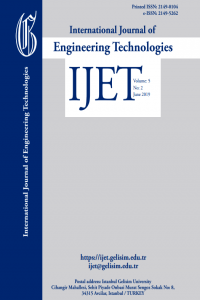Quantitative Estimation of Railway Vehicle Regenerative Energy Saving: “A Case of Addis Ababa Light Rail Transit (AALRT)”
A rapidly growing demand and shortage of electric energy require mankind to efficiently use it, recuperate and store it from the existing system, when possible, for further applications whenever the need arises. Electric trains figure among big energy consumers and among different railway transportation services; light rail transit trains are characterized by frequent stoppings to entrain and detrain passengers. In their operation, traction drives are made to keep on braking in order to meet their service requirements between closely spaced passenger stations. The modern service braking system used is regenerative braking, which acts as an electric energy generator during the braking period. The objective of this paper is to estimate the magnitude of regenerative energy that can be recuperated as a percentage of train energy consumption on East-West (Ayat to Tolhailoch) and West-East (Tolhailoch-Ayat) directions of Addis Ababa Light Rail Transit. Mathematical equations have been used to calculate the energy consumed between stations followed by the quantification of regenerative energy at each passenger station. Considering the current average running speed (24km/h) of the line, it resulted that 26.31% and 28.18% of energy consumption for East-West and West-East directions respectively are saved through regenerative braking energy recuperation. From the above results, it was observed that the magnitude of regenerative energy strongly depends on the speed at which the train is running and the efficiencies of inverter and traction induction motor.
Keywords:
Electric train energy consumption, speed, regenerative braking,
___
- A. M. Mahdiyeh Khodaparastan, "Modeling and Simulation of Regenerative Braking Energy in DC Electric Rail Systems," p. 1.
- J. C. M. B. E. D. Nima Ghaviha, "Review of Application of Energy Storage Devices in Railway," 2016.
- P. Sharma, "Regenerative Braking-Methods to Efficiently Use Regenerated Energy," Journal of Electrical & Electronic Systems, vol. 4, no. 2, p. 1, 2015.
- H. C. K. H. A. a. B. K. Ibrahim Sengor, "Determination of Potential Regenerative Braking Energy in Railway Systems: A Case Study for Istanbul M1A Light Metro Line," Journal of Automation and Control Engineering, vol. 5, no. 1, p. 1, 2017.
- T. T. a. Y. W. Shuai Su, "Evaluation of Strategies to Reducing Traction," energies, 2016.
- S. F. a. B. K. S. S. S. Fazel, "Energy-efficient Emplacement of Reversible DC Traction Power Substations in Irban Rail Transport through Regenerative Energy Recovery," International Journal of Railway Research, 2015.
- R. A. S. a. K. R. P. M. G. Read, "Are Flywheels Right for Rail?," International Journal of Railway, 2009.
- J. L. J. d. S. J. A. a. H. B. M. Hedlund, "Flywheel energy storage for automotive applications," energies, 2015..
- S. H. P. T. Tosaphol Ratniyomchai, "Recent developments and applications of energy," IET Electrical Systems in Transportation, 2013.
- S. M. J. D. H. a. M. T. C. R. F. Thelen, "A 2MW flywheel for hybrid locomotive power".
- C. Lamontagne, "Advanced Wayside Energy Storage Systems for Rail Transit".
- L. Caputo, Control of Energy Storage devices for Rail Vehicles, 1996.
- H. Hayashiya, "Recent Trend of Regenerative Energy Utilization in Traction," Urban Rail Transit, p. 4, 2017.
- A. Oberhofer, "Energy Storage Technologies & Their Role in Renewable Integration," 2012.
- P. Sharma, "Reversible Substation in DC Traction," Journal of Advance Research in Electrical & Electronics Engineering, vol. 2, no. 4, 2015.
- M. A. S. Chandra, Railway Engineering, Oxford University press, 2007.
- T. B.L, A textbook of Electrical Technology, Volume III.
- O. D. M. Mahmoud Saleh, "Quantitative Analysis of Regenerative Energy in Electric Rail Traction Systems," ReasearchGate, 2017.
- T. N. Andualem Aklilu, "Analysis of the Spatial Accessibility of Addis Ababa’s Light Rail: The Case of East–West Corridor," Urban Rail Transit, p. 5, 2018.
- ISSN: 2149-0104
- Başlangıç: 2015
- Yayıncı: İstanbul Gelişim Üniversitesi
Sayıdaki Diğer Makaleler
Ahmet Onur PEHLİVAN, Ahmet Utku YAZGAN
Jean Marie Vianney NKURUNZIZA, Jean D'amour NIZEYIMANA, Pacifique TURABIMANA
